Sofie Gråbøl
As seen on TV
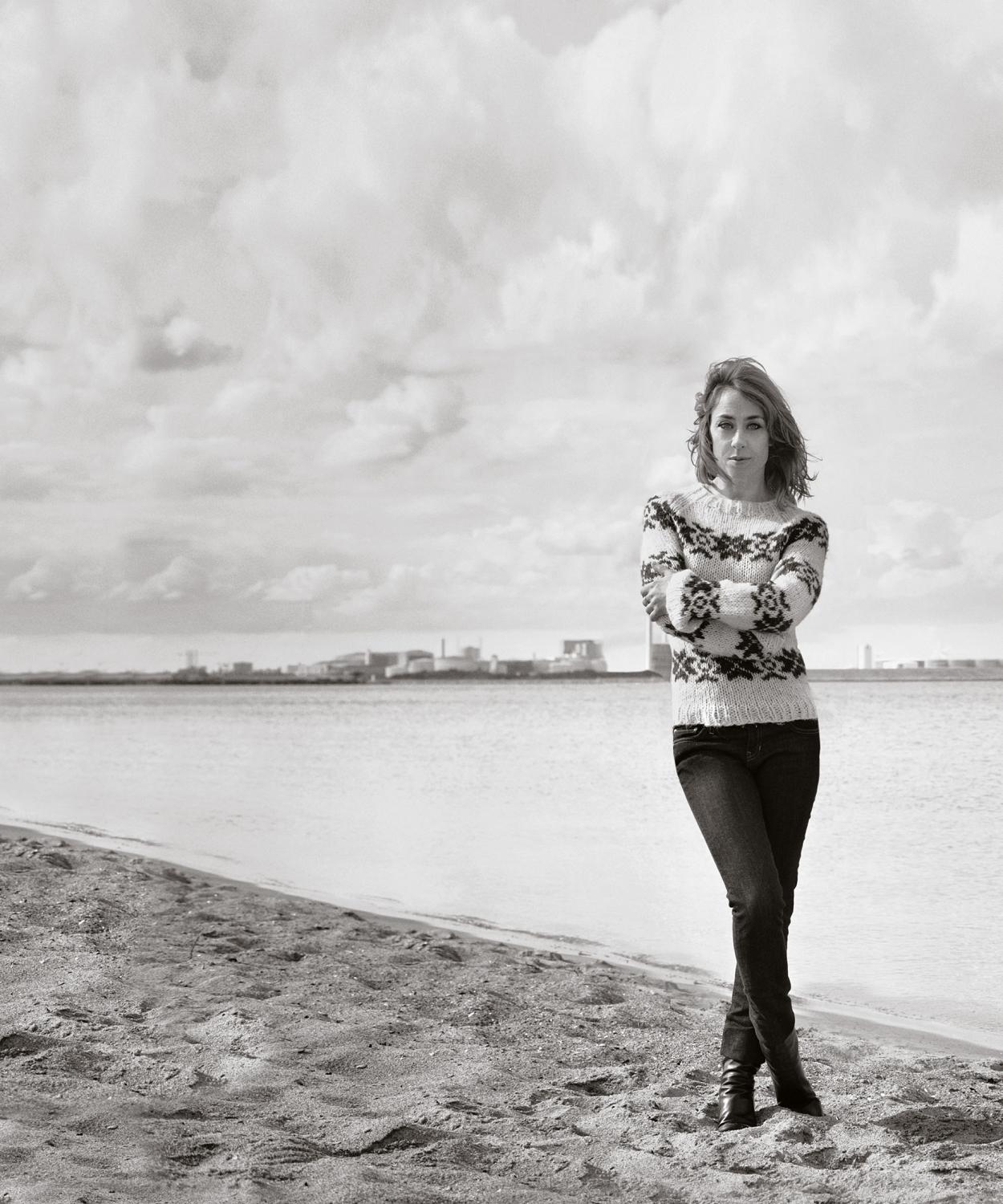
Photography by Benjamin Alexander Huseby
Styling by Hannes Hetta
Issue n° 4, Autumn & Winter 2011
Sofie Gråbøl has been a star in her native Denmark for years. But when she slipped on a Faroese sweater to play detective inspector Sarah Lund in The Killing, a 20-part TV murder mystery, an international audience started paying attention. Here, the actress models some arresting knitwear by the Danish coast, close to her Copenhagen home.
The Danish accent always sounds on the verge of tears to my ear. There’s a crack in it, a shiver mid-word that holds your attention. Sofie Gråbøl (pronounced, she says, to rhyme with ‘trouble’) is sitting opposite me in a Copenhagen café, drinking soup and talking about darkness. Which is interesting, because she laughs almost constantly, but important, because she’s become best known for her role in the TV detective show The Killing, in which she plays Sarah Lund, an enigmatic and brooding DI who discards relationships like paper towels. Sofie’s accent crackles. She sips her soup.
The show, a complex murder mystery, became a cult hit as soon as the original 2007 Danish series began playing on BBC4 (subtitled in English) in January 2011, with half a million British viewers debating Lund’s methods, parenting skills, and off-white Faroese jumper. However tense the plot, riveting the examination of power and corruption, and moving the depiction of a bereaved family, it was Gråbøl’s portrayal of Lund that kept us watching. (Such has been the show’s overall impact that its action has been shifted to Seattle for a US version, made by AMC.)
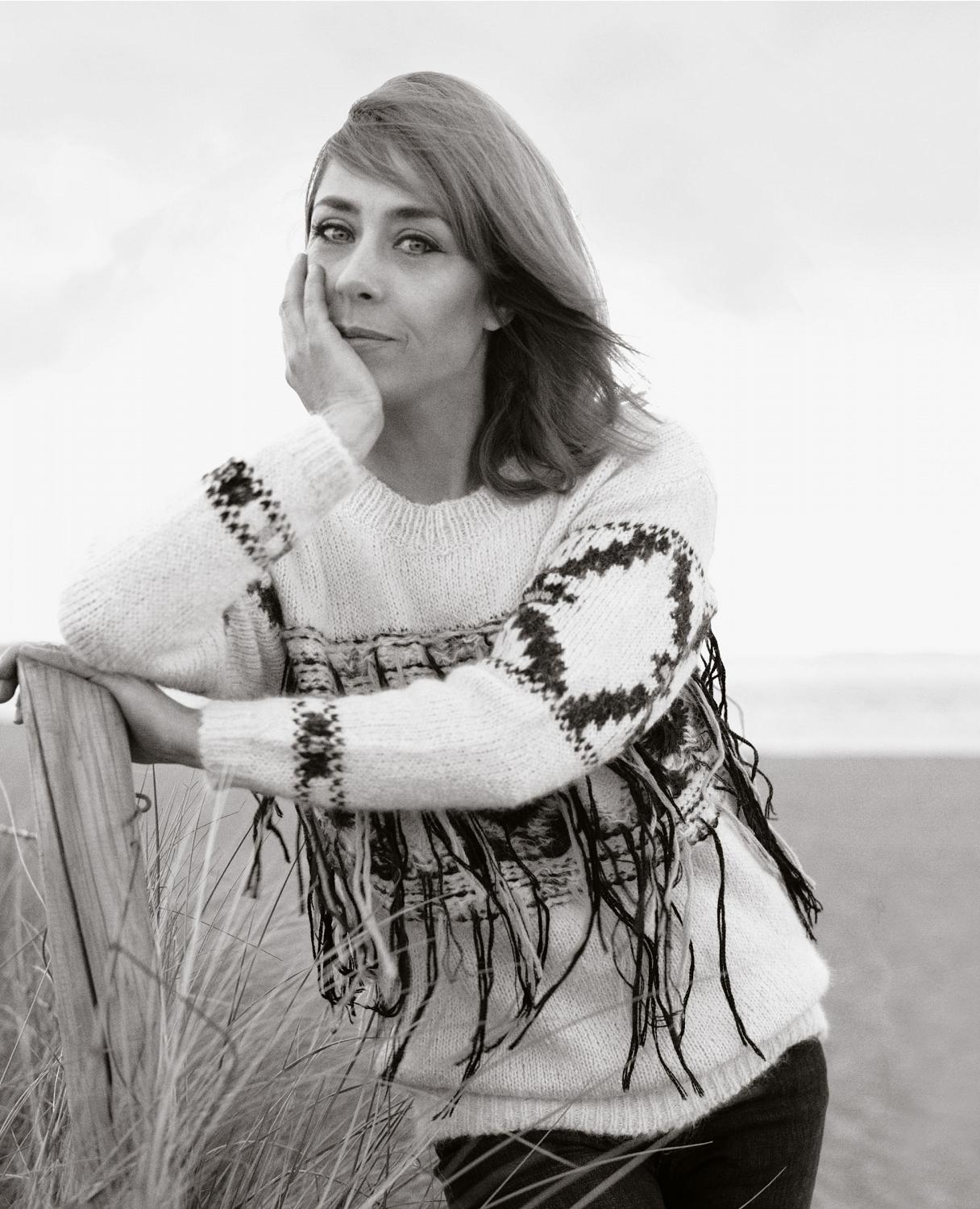
Here, Sofie is wearing a delightfully frivolous alpaca and merino mix sweater with Navajo motifs and dangling ‘floats’ by ISABEL MARANT. Her jeans are by WeSC. In the opening image, she wears the jumper that brought global fame to its designers, GUDRUN & GUDRUN. The jeans are by GAP and the leather boots are CHLOÉ.
Gråbøl, 43, grew up on the outskirts of Copenhagen with a left-wing mother, an older brother, and, she says, no ambitions at all. When she was ten, her brother stole some change from their mother’s purse. Instead of punishing him, her stepfather called a meeting. He put all the family’s money into a jar and invited them all to take what they needed, whenever they needed it. Sofie never opened the jar. “I had an extreme amount of freedom in childhood,” she says, slowly. “Very few limits. It was good and bad for me – on one hand, it made me very independent. On the other, it was quite... lonely, maybe because there weren’t any rules.”
She left school at 17, taking a job in a hotel checking minibars, sleeping until noon. “Then I saw an audition in the paper,” she says, “for a film about the painter Paul Gauguin. I didn’t go to a regular audition. I had two or three meetings with the director, and then with Donald Sutherland, who was playing Gauguin, but no acting, no screen testing. I got the part. Then I got another part, and suddenly I was an actor.” That first day at work with Donald Sutherland was her first contact with the camera. “And it was a nude scene, standing in a bathtub. Quite a start!”
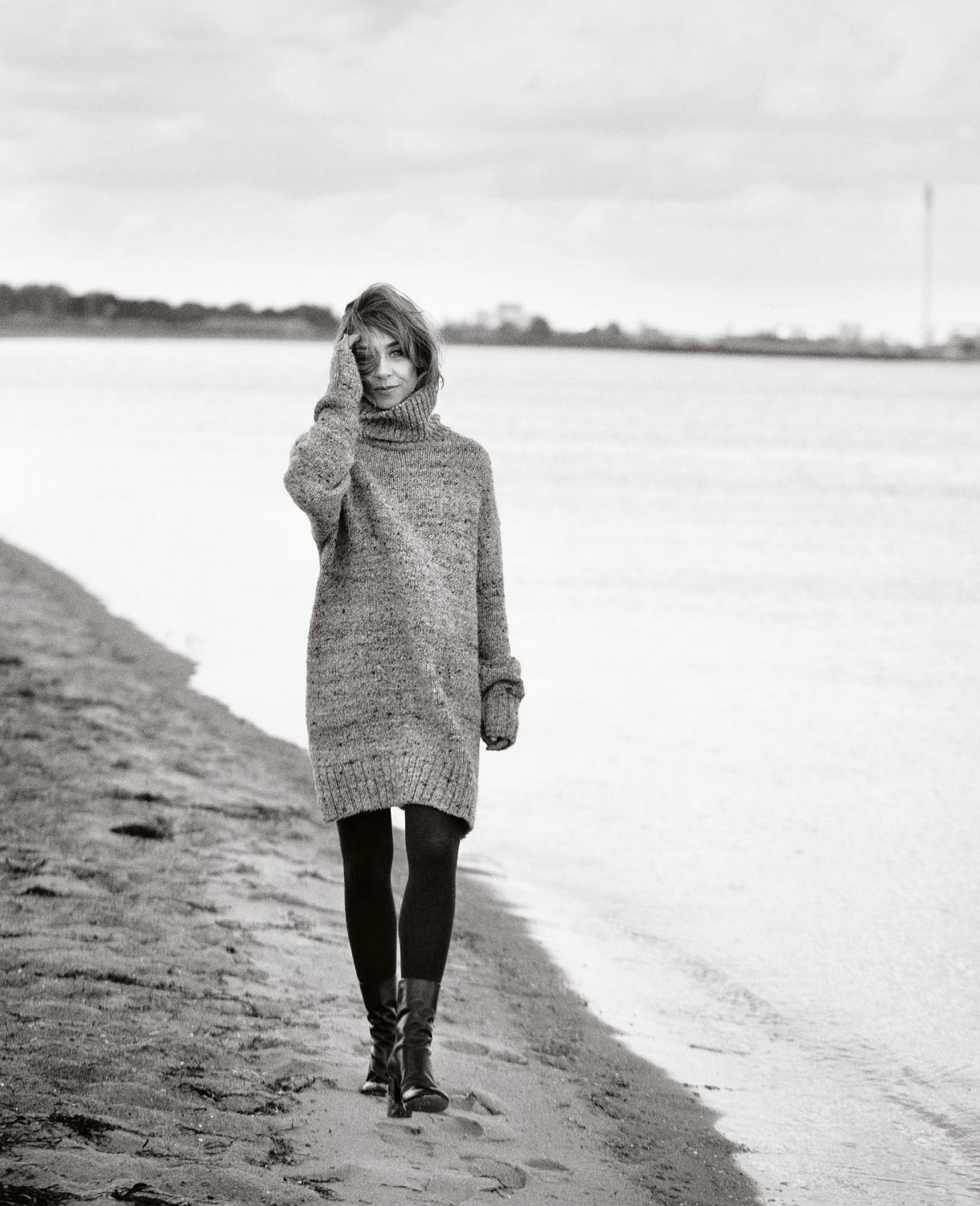
Here, Sofie wears a drop-sleeve, marl knit jumper dress by CÉLINE. The tights are by AMERICAN APPAREL and the boots by CHLOÉ.
She has since played a huge repertoire of roles, from Lady Macbeth to television comedy characters, and worked with directors including Lars von Trier. She says she’s reached a point where the crime genre seems to suit her. “I like working within a fixed frame. With crime, you’re always dealing with clichés – you have a pact with the audience. It’s the same with Lars von Trier’s Dogme rules. It sets the creativity free.” She pauses, and I count nine seconds as she looks into her soup. “The exercise,” she continues, picking her words carefully, “is: how can you keep your freedom within this cage?”
It feels like she’s talking about something else – relationships, perhaps? “Well.” She smiles. “I’m a single mother now. I’ve a boy who’s ten and a girl of seven. And it’s good. I like doing things myself. I have no agent, no cleaner. I like to be in charge.” While her manner is the opposite of Sarah Lund’s – she’s gentle, polite, articulate, welcoming – the more she opens up, the more similarities are revealed. “I used to find Lund very strange,” she says, “very remote from me. I’d been used to playing the emotional, expressive characters that cried all the time. But that was one of my wishes to the writer – that she should be held back, unable to communicate.”
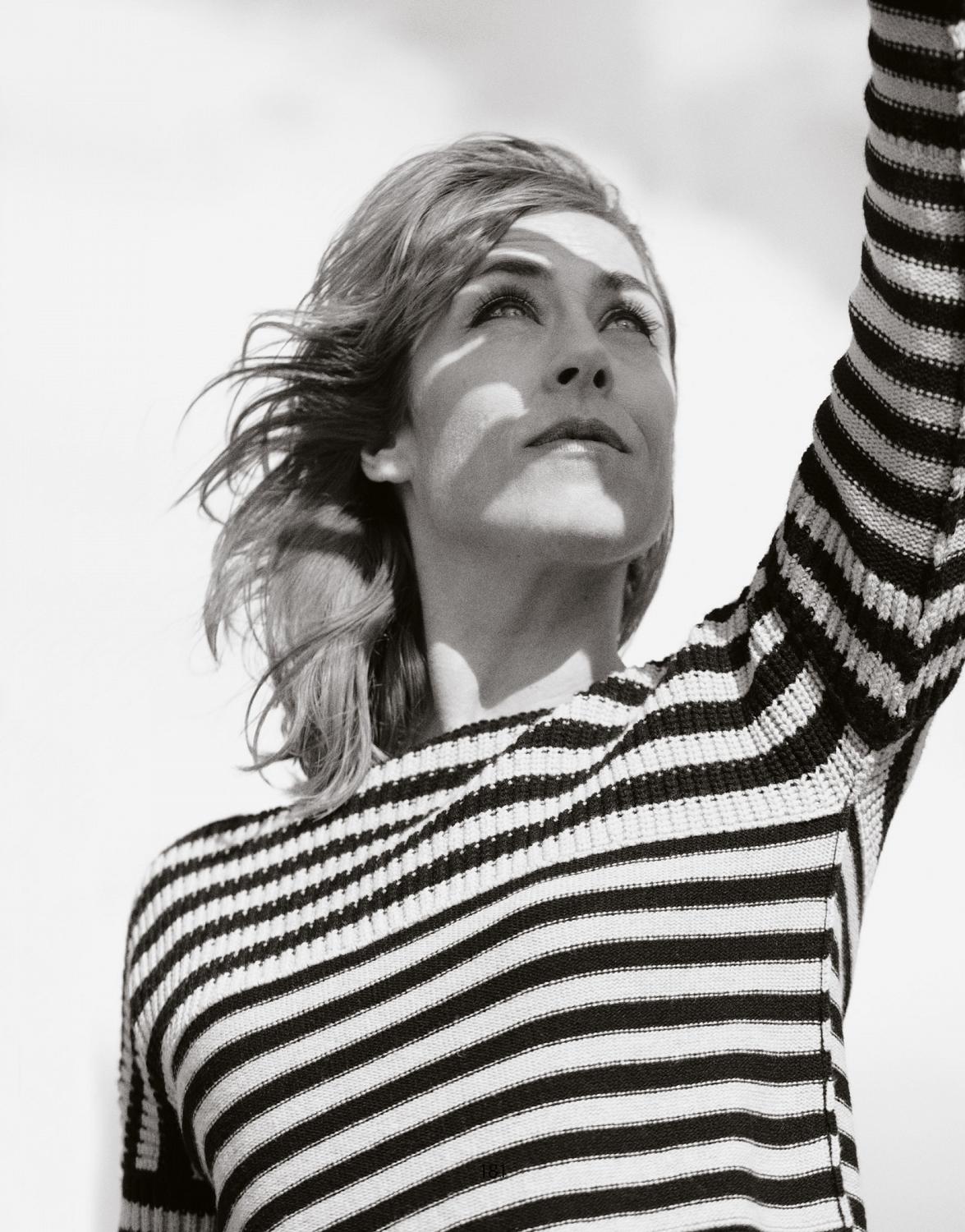
Here, Sofie enjoys the sensual ease of SONIA RYKIEL's striped knitwear in a particularly complex jumper inspired by Guernsey fishermen.
The writer, Søren Sveistrup, worked closely with Sofie on the show. “I only had her in mind for the part,” he says on the phone later, one day in August (the pair had started shooting the third and final series that morning). “She is by far the most gifted actress I know. She has a special glow. I can make her impolite, dark, social, but you can’t hide her glow. Sarah Lund, in spite of her own problems, is a torch shining through a sinister situation.”
“I have affection for that jumper. It speaks of a woman who doesn’t have to signal she’s competing with men.”
Some critics have written that Lund is so interesting because she is so masculine. “To me, she’s very feminine,” Sofie replies quickly. “My male friends are a lot more sentimental than me – I’m more rational and focused.” She followed a female detective for a week while developing the character. “And she was totally different from what I imagined. She wore lots of make-up, a short skirt, long blonde hair. That set my mind free. I thought: Why would you choose a line of work that deals with the most horrifying aspects of human nature? It must be because you have a lot of darkness in you.” In the second series, screening in Britain this autumn, they explored Lund’s ‘darkness’ even further, without ever explaining its origins. “I don’t need to know why,” Sofie says. “The older I get, the more interested I am in the questions rather than the answers.”
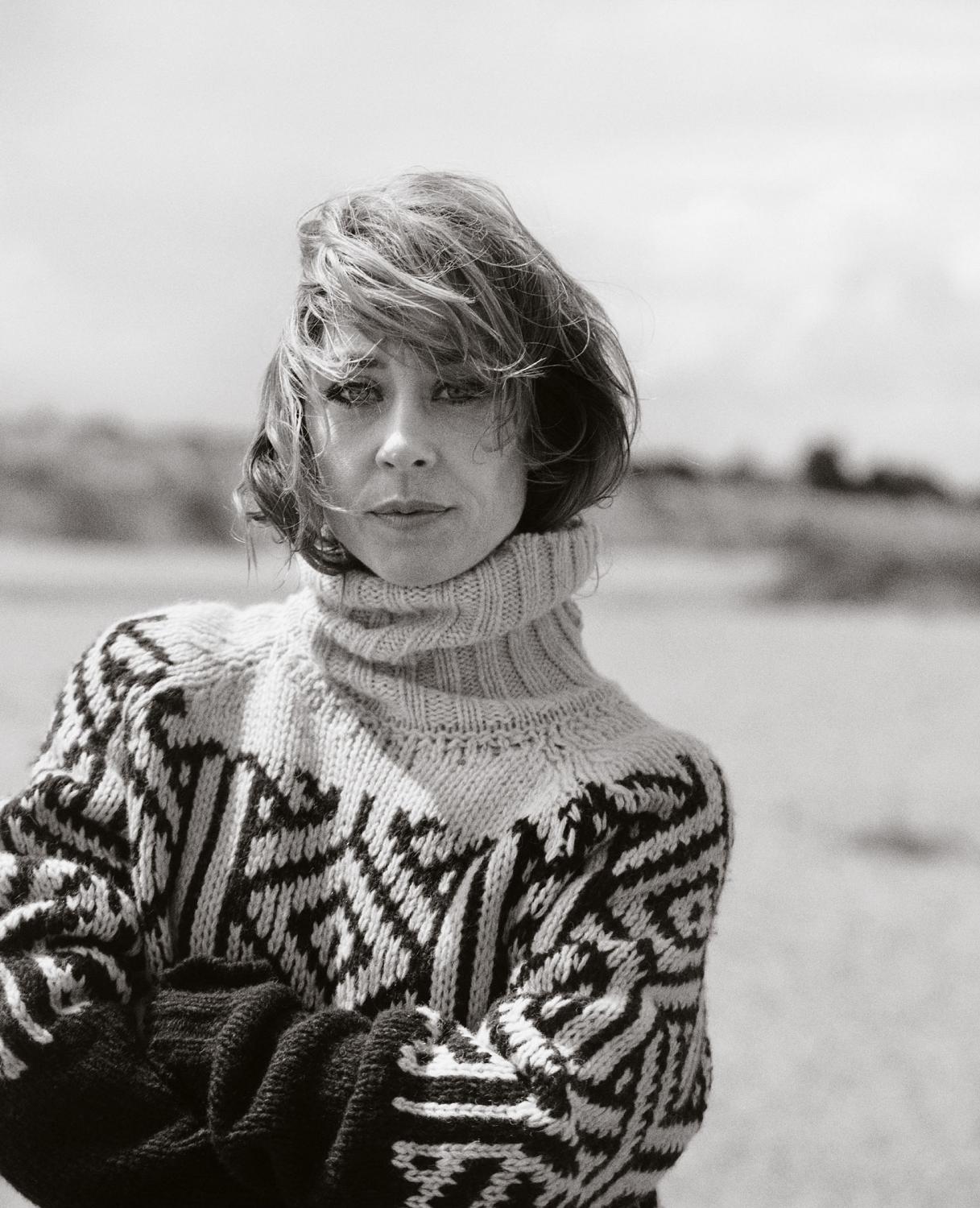
The 3×3 ribbing of this robust Fair Isle jumper from DRIES VAN NOTEN’s men’s collection makes a welcome companion for the rugged autumn months.
Sofie recently took her children to Disneyland Paris; there, a woman came up to her, excited, saying, “I have to shake your hand! My son got to meet Donald Duck, but I get Sarah Lund!” Did they recognise her, out of the jumper? “That stupid jumper!” She gestures with her spoon. “I may have chosen it, but sometimes I’ve felt it was wearing me rather than the other way round. I have great affection for it, though, because it tells so many stories. A woman who doesn’t have to send a signal that she’s competing with men.”
In 2011, after five years of research, the Legatum Institute in London, a nonpartisan think tank, ranked Denmark the happiest place in the world. The Killing, with its drawn-out murder investigation and panning shots of rainy forests, tells a very different story. Is Sofie happy? She smiles and wrinkles her brow. “I complicate things. I worry. I think a lot. I’m never happy. But I’m happy with not being happy,” she says. “Are you happy?”
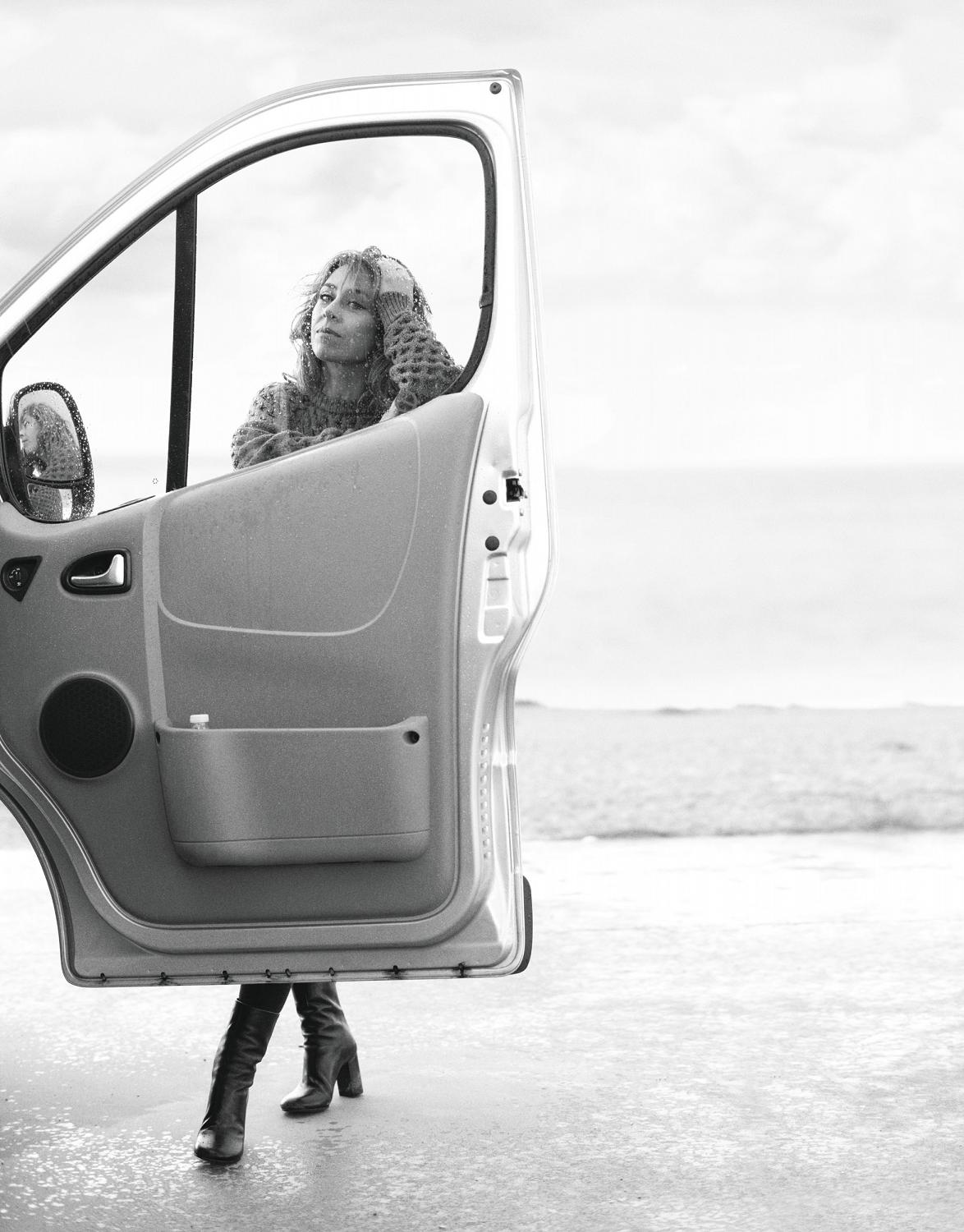
The chunky cable of an Aran knit jumper dress by ISABEL MARANT is highly distinctive, even from the slightest glimpse. The delightful clumpiness of the boots, meanwhile, says CHLOÉ.
Eva WisemanLondon-born Eva Wiseman is both commissioning editor and columnist for the Observer magazine, where she has been dispensing thoughtful, humorous perspectives on pop culture, gender and style since 2008. Prior to that Eva studied to be an artist and contributed to The Face and NME. It is a widely held…read more Photography by
Benjamin Alexander HusebyThe photographer Benjamin Alexander Huseby hails from Norway. He studied at the Chelsea of School of Art, London and currently lives in Berlin. Benjamin is a contributor to magazines such as Fantastic Man, Self-Service, both UK and US editions of Vogue, BUTT, Dazed and i-D and his work has featured in…read more Styling by
Hannes HettaSwedish stylist Hannes Hetta is a contributing fashion editor to The Gentlewoman and one seriously in-demand man. Just some of the publications to feature his many contributions are Fantastic Man, Hercules, i-D, T: The New York Times Style Magazine and Vogue Hommes International. Hannes also consults…read more
Hair: Lasse Person at Agentur using TRESemmé. Photographic assistance: Kristina Weinhold, Andreas Mortensen. Styling assistance: Romain Liegaux. Postproduction: Provision. Production: Rachel Elliston at REP Limited.
This profile was originally published in The Gentlewoman n° 4, Autumn & Winter 2011.